A landing page is a standalone web page created specifically to guide visitors toward a specific action, such as signing up for a newsletter, downloading a resource, or making a purchase. Unlike regular website pages, landing pages are highly focused and designed with a single goal in mind—reducing distractions and keeping the user’s attention on the intended action.
They often include compelling headlines, concise content, and a clear call-to-action (CTA) to maximize conversions, making them an essential part of marketing and advertising strategies.
Why you need landing pages
Landing pages provide a way to test how to improve conversions. You can put up different landing pages with different layouts and content to see which one gets people to sign up, download an e-book, or buy your product. Looking at examples of landing pages can give you insights into which images, content, and layouts tend to perform best.
Make onboarding easier with landing pages
Landing pages are most often associated with advertising campaigns, but they can also be used for other functions, such as user onboarding. The goal of user onboarding is to introduce users to a new product and explain how it works. A typical onboarding process takes a user through the signup, the product tour and tutorial, and finally turns them loose to start trying the features.
When you onboard new users for your product, like a new application or software product, you want them to immediately find value so that they’ll keep using the product and paying for their subscription. Right out of the gate, a good landing page can set the tone for the relationship and let the user know what to expect.
If your onboarding landing page is targeted, user-friendly, and streamlined, the user will be more likely to use more of the product’s features and become a long-term customer.
Landing pages can also be part of the product tour of an app or software product. The text and imagery on a landing page can provide a preview of what the user can expect after signing up.
After signup, the landing page can segue directly into the app, using similar imagery to reassure the user that they’re in the right place. The onboarding sequence can continue, showing the user how to customize the app to their preferences and get started with it.
For example, a landing page for a website builder might promise that it’s easy to set up the website and, therefore, show images of the user interface. After signup, the user would be taken into a tutorial with popup guides that show them how to choose a website template, add images, and add text to their websites.
Landing pages improve lead generation
All companies want to close more deals and boost sales. To do that, they need a consistent stream of new leads that can be moved down the sales funnel. Landing pages play a critical role in the lead generation process by capturing website visitors’ information and converting them into leads who can be contacted by the sales team.
You can also use landing pages to help your sales team upsell, and make their jobs a whole lot easier. Landing pages optimize the lead generation process because they take visitors to pages tailored to their specific interests and intent.
For example, a T-shirt maker could run ads promoting a new line of kids’ T-shirts, and users who clicked on that ad would go to a landing page where they would see only information about the company’s line of children’s products.
Once visitors complete an action — such as filling out a web form — a salesperson or customer service rep will know what types of products each visitor is interested in. They can then tailor their sales pitch or messaging to better meet each lead’s expectations. Salespeople can also provide targeted educational or product information, like case studies, to help persuade each prospect to become a customer. This gives your sales team an edge and can help them improve their close rates.
Where to start with landing pages
The goal of a landing page isn’t to get as much traffic as possible — it’s to attract the visitors who are most likely to convert, whether that means they’re making a purchase or handing over contact information in exchange for a discount or useful piece of content.
But before you start driving targeted visitors to your landing pages, you first need to know who your target audience is and why they’d want to take that action.
To do this, you need to research your target audience and what motivates them. Start by looking at the following audience characteristics in your existing website analytics platform, social analytics platforms and even your e-commerce platform analytics:
- Demographics. Age, gender, location, and income all fall into the category of demographics. When creating a landing page offer, the content and imagery you’d use for a 55-year-old male are much different than what you’d use for a 22-year-old female.
- Psychographics. Psychographics is the study of personality traits, lifestyle characteristics, aspirations, opinions, and interests of certain groups of people. They help companies understand the triggers that push a customer to buy.
- Where they spend time online. Your visitors may spend most of their time reading blogs, searching for information on Google, or checking out social media ads. With this information, you can tailor the content, design, and layout of your landing page to look and feel similar to the channels where your visitors spend the most time.
- Design preferences. If you’re selling a visual product or service, consider the types of graphics and visuals your customers respond to best. For example, if you’re offering a free trial of a software product, screenshots can be an effective way to show your audience what they’ll get after signing up, which is one of the key landing page design tips to improve conversions.
- Accessibility requirements. Regardless of the demographics and psychographics of your ideal audience, your landing pages need to be accessible to those with disabilities. Some of these standards include providing text for all non-text content so it can be turned into large print, braille, or speech; making sure color isn’t the only visual being used to convey information; and allowing text to be resized up to 200 percent without losing functionality.
Finding the right landing page builder
A good landing page builder should include
- A wizard that lets you easily build your landing page without needing to code anything
- Templates you can easily modify to match your existing website branding
- Tools to add long-form text, images, or other design elements to your landing page
- A call-to-action button to encourage landing page visitors to perform an action or conversion
- A form or form integration where visitors can sign up to get more information
- A way to customize the domain name for your site
- Analytics that track the performance of your landing pages
- Testing options that let you run A/B tests and multivariate tests
When choosing from the many different landing page builders available, make sure you can easily customize anything you create to suit the look and feel of your website. Using readymade templates can help speed up this process, but you’ll still need to add your own images and visuals, and change fonts and colors.
Selecting a landing page template
There are several types of landing pages to choose from:
- A squeeze page is often a top-of-the-funnel page that is created solely to capture your visitor’s email address. The page has no exit hyperlinks, and the content and layout are focused only on converting the visitor.
- Splash pages are a little like popup ads, except that they cover the entire page. The goal might not be conversion; it might just be to get the visitor to click on an ad, to make an announcement, or to let the visitor choose how they want to interact with your site.
- Click-through post-click landing pages are bottom-of-the-funnel landing pages that let your visitors read through your offer without being distracted by a “Buy Now” button or the equivalent. They’re ideal for products or services that require more consideration before purchase, and they usually include a free trial offer.
- A sales page is a landing page that focuses on turning a visitor directly into a customer. This requires the landing page content to be even more persuasive than other types of landing pages. These pages, often include testimonials and reviews from other customers. Many also offer a special promotion or limited-time offer to entice visitors to buy the product right away.
As you look at landing page templates, be sure to choose the one that most closely matches the type of landing page you’re trying to create.
The call to action
Possibly the most important part of any landing page is the call to action (CTA). The CTA is a very clear instruction to your visitor: Buy this now, download this e-book, sign up for our newsletter, etc. You need to give visitors a reason to take that action, so start with a strong command and use words that will inspire emotion or enthusiasm.
One useful tactic is to instill a little fear of missing out, such as a call to action that says, “Buy this today! Sale ends Tuesday!” By evoking enthusiasm or emotion, this tactic gives your visitors a reason to take action now, instead of leaving your landing page and then forgetting about the offer.
Types of landing pages
This section will discuss ways that industries like real estate, consulting, and education can leverage landing pages.
Real estate landing pages
Most real estate landing pages feature short, direct copy, along with images or videos of a specific property. There are three standard types of real estate landing pages that Realtors and brokers frequently use:
- A home search landing page
- A home value landing page
- A free content landing page
The home value landing page offers a tool, such as a home valuation calculator. The visitor inputs their address and has to enter their contact information before getting their home valuation. These can either be instant home values, where the visitor immediately receives an estimated value for their home, or a comparative market analysis (CMA) value, where the visitor leaves contact information in exchange for a more accurate, professional home valuation.
Real estate agents also offer free content, like guides for buying or selling homes, in exchange for contact information. These landing pages give potential leads valuable content and let the real estate agent know what they’re interested in.
Lead capture landing pages
Business consulting firms can also leverage landing pages to capture leads. To do this, they provide a download, like an e-book or a checklist, in exchange for contact information.
Best practices for consultant landing pages include keeping the copy short and using a bold headline with a question that taps into a common industry pain point, like “Are you as efficient as you could be?” Follow this with a few sentences explaining the benefits of the consulting firm and bullet points outlining what visitors can expect after they download the gated content (usually an e-book or whitepaper).
Travel industry landing pages
Travel industry landing pages can also be great for lead capture. These pages tend to have a lot of stunning imagery of the location, along with simple, persuasive language. Often, the travel landing page is designed to get the visitor to book a vacation now, so it has to have compelling visuals and copy to get them to hand over their hard-earned money.
Alternatively, travel landing pages can also offer a downloadable guide, like “The 10 Things You Need to See in Italy.” Not only does this provide the visitor with interesting and useful information, but it also lets the travel company know what they’re interested in — in this case, a trip to Italy.
Education landing pages
Even higher education can benefit from landing pages. Education landing pages typically have the contact information form at the top, with a call to action to apply to the institution.
Educational institutions also use landing pages to encourage the visitor to request more information. In exchange for their contact information, visitors get a downloadable brochure or other piece of content regarding a major they’re interested in.
This is the natural evolution of the way people used to request information about schools — by sending a letter asking for a print brochure — and it helps the institution follow up with the visitor by offering more details about the specific program they’re interested in.
“Coming soon” landing pages
For companies that haven’t yet launched, a “coming soon” landing page can help build buzz. These are fairly simple pages that lay out the benefits of the business and ask for the visitor’s email address. Often, they include a countdown to launch and encourage visitors to sign up for early access to the service or for a newsletter where early subscribers can get perks.
These types of landing pages focus on providing visitors with information about what to expect once a service or product launches. For example, they can include a demo video or screenshots of a product in development to help visitors decide whether they want to be notified when the launch happens.
Landing page optimization and tracking
Choosing a landing page builder and template, deciding what you’ll offer in exchange for valuable contact information, and populating the landing page with content takes a lot of time.
Naturally, you’ll want to make sure your landing page performs at its absolute best. That’s where landing page optimization and tracking come in.
Landing page optimization
Landing page optimization is the process of testing different elements of your landing page to see what gets visitors to take action. You may find that using certain words or images works better when it comes to getting visitors to provide their contact information or make a purchase.
When you optimize your landing page, you use methods like A/B testing to see how well different elements work. With A/B testing, you change one element of your landing page and serve both versions (Version A and Version B) to a set of visitors to see how the change affects the conversion rate.
You can try different tactics to optimize your landing page:
- Limit how much a visitor can do on the landing page. Test out how the conversion rate changes when you remove elements from your landing page, like extra form fields or website navigation. More white space may mean more conversions.
- Try different variations of your headline and call to action that matches what visitors are searching for.
- Establish credibility by adding customer logos, quotes, or case studies. Sometimes, just adding social proof like a Realtor® logo (if you’re a licensed Realtor) can get visitors to trust you and share their contact information.
- Test different offers for your landing page. Think about the types of offers that will be compelling to your target audience and will drive conversions.
- Do search engine optimization. Your landing pages don’t exist in a vacuum. Search engines can index them — if they are valuable. You can link to your landing pages from a blog page or a resource section to help get them indexed.
Landing page tracking
To help with landing page optimization, you should track certain metrics. These will help you evaluate the success of your landing page.
- Views. You need to know how many people are viewing your landing page as a baseline. Check to see when people are visiting your landing page, e.g., during the week or on weekends. Look for patterns that show if there’s a particular day or time when traffic spikes.
- Where visitors come from. To gauge how effective a certain campaign is, it helps to know where your traffic is coming from. You may be getting a lot of traffic from an email campaign but none from social media. This information can help you decide whether to double down on the channels that are working or try to improve the ones that aren’t getting much traction.
- How many visitors are converting. You can track this metric through GA4 if you set up goals. By doing this, you can see how many people are completing a goal, whether it’s completing a form or downloading an e-book.
- What your visitor-to-contact ratio is. This metric helps you reverse-engineer your campaign goals. Before you launch a campaign, you can set a goal for how many leads you want a campaign to receive. If you have an estimate of what your conversion rate should be, you can figure out how much traffic you’ll need to reach your goal.
- How long your visitors spend on your landing page. If you have a longer educational landing page, you’ll want to make sure your visitors are giving themselves enough time to read it. If you notice a low average time on page, that may indicate you need to shorten the content or make it more digestible.
- What the bounce rate is. If a lot of visitors leave your site after seeing only your landing page, and not taking action, this may mean that your offer isn’t clear or your campaign promotion is misleading.
Tracking these metrics can help you figure out if you need to further optimize your landing pages.
How to create mobile landing pages
Mobile landing pages are designed for quick conversions on small screens, unlike desktop landing pages that provide more information and screen space. To ensure visitors can act quickly, mobile landing pages should be concise, with essential information easily accessible and minimal scrolling required.
Challenges in mobile landing page design
The small screen size poses a challenge. Important elements like the call-to-action (CTA) button may not always be visible, and users with data limitations may avoid pages with heavy visuals. Responsive designs, while helpful, aren’t enough as they primarily adapt desktop layouts for smaller screens. Mobile-specific landing pages should use shorter copy, bullet points, and fewer images or videos.
Key Design Tips
- Keep text brief and use direct, engaging headlines.
- Use “click-to-scroll” options for navigation on shorter pages.
- On longer pages, include a sticky header or footer with the CTA for easy access.
Click-to-call landing pages
For businesses with complex products or services, click-to-call landing pages simplify the process. Instead of forms, these pages feature a prominent button that directly initiates a phone call. Key elements include:
- Embedded dialing code for seamless functionality.
- Clear CTAs encourage visitors to call for more information.
- A focus on a single goal, such as scheduling a test drive or obtaining specific product details.
Example: An auto dealership’s landing page might include a headline, a vehicle photo, pricing info, and a “Call for Details” button to schedule a test drive.
App download landing pages
For app developers, mobile landing pages are crucial to drive downloads. These pages act as the first step in a user’s journey and should:
- Highlight the CTA button to direct users to the appropriate app store.
- Clearly explain the app’s value proposition and benefits using short, impactful bullet points.
- Include social proof, like testimonials, to build trust.
- Feature visuals optimized for mobile screens to showcase the app experience.
How Jotform can enhance landing pages
You can create forms using Jotform’s drag-and-drop form builder, adding the fields you need visitors to fill out. You can also place a button on your landing page to direct visitors to the form.
Jotform allows you to style your form so it will match the look and feel of your landing page and your overall branding. With over 10,000 templates to choose from, it’s quick and easy to design and implement a contact form for your landing page.
The forms come already optimized for mobile devices, so you can embed one directly into the landing page, or you can send visitors to a Jotform Mobile Forms to collect their information.
Jotform integrates on the backend with most CRM systems and databases, storing the data where you want it while your user continues on their journey.
Jotform ensures the data your visitors submit is safe. A 256-bit SSL connection with a SHA-256 certificate, the same level of protection used by online banking providers, keeps all of your lead and customer data safe. You can also encrypt your forms to make sure that submission data is transferred and stored securely. Jotform uses high-grade RSA-2048 on the user’s computer. If you collect payment data, Jotform is fully PCI DSS compliant.
In addition, if any of your users are in the European Union, you need to comply with the EU’s General Data Protection Regulation (GDPR), which applies to any business that collects information from customers in the EU. Jotform is GDPR compliant, which makes it easier for you to expand your global reach.
Jotform helps ensure you collect useful data from visitors. While you’ll get a lot of valuable leads or new users if you’ve followed the advice in this guide, you’re also likely to get your fair share of spam bots filling out your lead capture forms. Jotform lets you use Captchas in your forms and provides options to protect yourself from spammers.
Finally, Jotform lets you run A/B tests on your forms so you can see if eliminating a form field or changing the color of the submit button leads to more conversions.
Examples of Jotform in landing pages
There are a lot of ways that Jotform can enhance your landing pages, no matter the sector. One example is summer camp registration. Your landing page can direct prospective campers to a registration form. By integrating Jotform, you can register campers, accept payments, and populate your system with the relevant information on your campers automatically. You can even build a form for other purposes: collecting medical information, accepting a payment, arranging for arrivals, or getting feedback.
You can also use Jotform to create a PayPal form. A PayPal form lets you collect payments directly from your landing page, as opposed to collecting information to make a sale later on. Jotform has several PayPal payment tools available, including support for both PayPal Pro and PayPal Checkout.
You can create HIPAA-friendly forms with Jotform. If your visitors need to submit medical information, you can rest assured that you’re following HIPAA regulations. Users can also upload images or electronically sign documents. With features that help with HIPAA compliance, you can integrate with other HIPAA-friendly software, such as Google Sheets. Jotform even has HIPAA-friendly templates you can use so you don’t have to start from scratch.
With Jotform, you don’t have to reinvent the wheel when it comes to the forms you use to collect visitor data. Whether you embed the form into your landing page or direct visitors to a separate form via a button, Jotform lets you focus on building a stunning landing page that inspires visitors to complete the call to action. It’s one less thing you have to worry about, and it makes the conversion process that much easier.




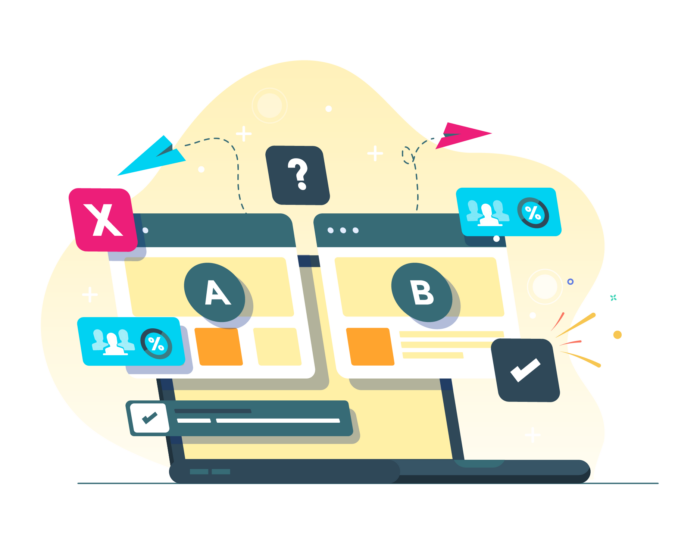
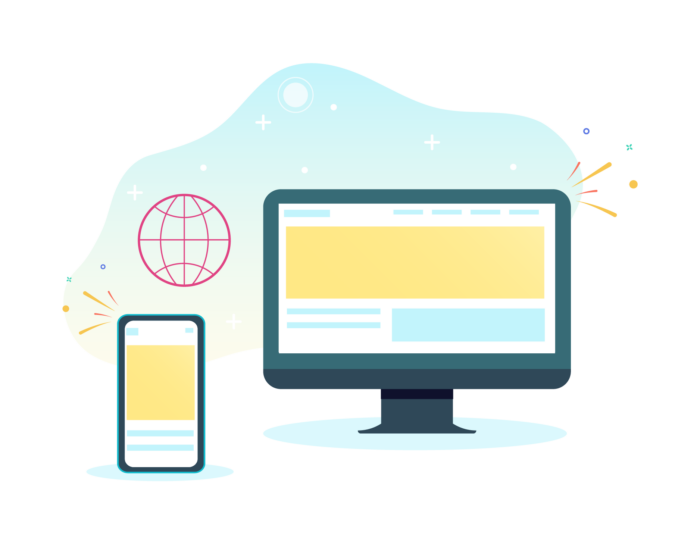
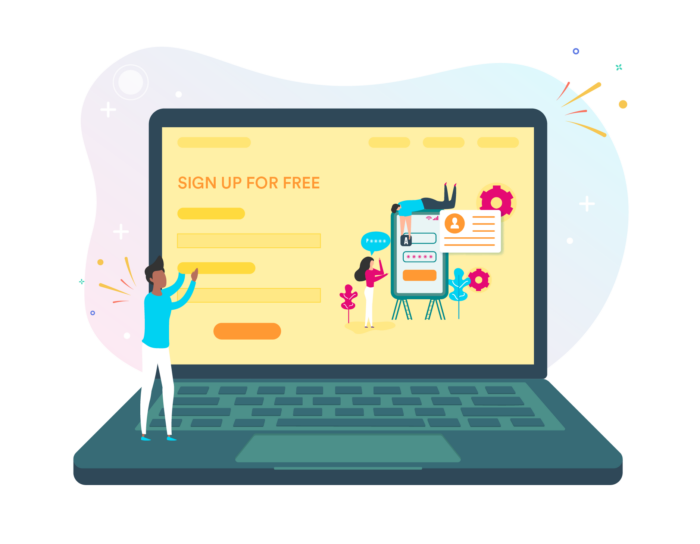



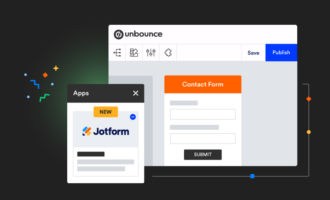



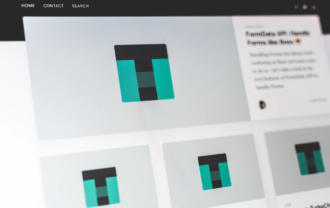




Send Comment:
1 Comment:
More than a year ago
I’ve struggled with building a landing page for my business, but I really needed a way to capture visitor information. This guide helped me troubleshoot why my landing pages haven’t worked so far, and after I created a more streamlined and SEO-friendly page, I noticed an increase in newsletter signups from the landing page.